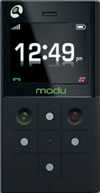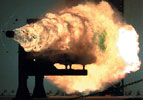
South Africa
Electronic Industry Supplies has been appointed as official distributor of Zestron, the German manufacturer of cleaning products used in PC board production and processing.
Overseas
Business
Agilent has reported revenues of $1,39 billion for the first fiscal quarter ended 31 January, 2008, 9% above one year ago. First quarter GAAP net income was $120 million, or $0,31 per diluted share; last year's first quarter GAAP net income was $150 million, or $0,36 per share. Included in this quarter's GAAP income is $30 million of share-based compensation expense. Excluding this item and $10 million of other net adjustments, first quarter adjusted net income was $160 million, or $0,42 per share.
Mentor Graphics announced fiscal 2008 fourth quarter revenue of $284,8 million, up 14% from last year, and annual revenue of $879,7 million, compared to $802,8 million last year. On a GAAP basis, fiscal 2008 fourth quarter earnings per share were $0,39 and $0,32 for the full year; this compares with last year's fourth quarter earnings per share of $0,36 and annual earnings per share of $0,33.
Analog Devices posted revenues of $614 million for the first quarter of fiscal 2008, which ended February 2, 2008. This was a decrease of 1,5% compared to the immediately prior quarter and an increase of approximately 4% compared to the first quarter of fiscal 2007. Gross margin for the latest quarter was $376 million, or 61,2% of revenue, compared to $374 million, or 60,0% of revenue, in the immediately prior quarter. Gross margin for the same period one year ago, excluding $35 million of revenue from a one-time intellectual property (IP) licensing agreement, was 61,7% of revenue. Diluted earnings per share from continuing operations for the first quarter of fiscal 2008 were $0,40, compared to $0,37 for the same period one year ago and $0,38 for the immediately prior quarter.
Toshiba has decided to stop punting its HD DVD format, a competing technology to Sony-backed Blu-Ray, after losing the support of key studios and retailers. Toshiba plans to stop production of HD DVD players, recorders and disk drives altogether by the end of March. The move, which will effectively result in one 'standard' for the home DVD market, is expected to accelerate adoption of the next-generation technology by reducing consumer's indecision about which format to support (HD DVD and Blu-Ray are not inter-compatible).
Companies
Kontron, a supplier of embedded computing technology, has signed an agreement, via one of its subsidiary companies, to acquire 100% of the shares of French Thales Computers. The closing is expected to take place this month after approval of the French Ministry of Economy. The turnover of Thales Computers is expected to be more than EUR 20 million for the business year 2008. The company commands particular strength in high-end applications, especially in the government, aerospace and transportation sectors.
JDSU has joined the Nortel-led Carrier Ethernet Ecosystem, a group of companies dedicated to developing new, Ethernet-based approaches to meeting the burgeoning bandwidth demands from the increasing popularity of HD video, social media and advanced business services. The Carrier Ethernet Ecosystem is designed to provide service providers with the ability to create and extend Carrier Ethernet at a fraction of previous costs. JDSU's Metro Ethernet test and measurement portfolio includes the full range of Ethernet test instruments, systems and software, enabling analysis of all seven layers of Metro Ethernet services.
Fujitsu Components Europe has switched to Green Energy (NatuurStroom) from Nuon, a Dutch energy utility with over 2,5 million customers in the Netherlands, as well as in Germany and Belgium. NatuurStroom is made up of 100% sun, wind and water energy. Fujitsu expects the move to reduce its CO2 emission by 60 tons per year and reduce its radioactive waste to zero.
Zarlink Semiconductor has sold its analog foundry in Swindon, UK, to MHS Electronics for just 1 Euro. As part of the agreement, Zarlink has transferred all assets related to the foundry business, including the analog foundry and equipment, employees, third-party inventory and other assets but excluding cash on hand, accounts receivable and accounts payable. In addition, Zarlink has paid MHS 2 million Euros to support restructuring initiatives. The two companies have signed a three-year agreement to ensure continuity of wafer supply for Zarlink, under which Zarlink will deposit US$3,9 million, representing about nine months of product orders.
Industry
Databeans expects continued healthy growth for the automotive electronics market. The current forecast calls for annual growth of 9% on average, reaching a market value of $173,7 billion by 2013, from estimated sales of $114,5 billion in 2008. Growth in Driver Assistance, Safety Systems, and Entertainment is expected to be particularly strong, while the Consumer Retail, Powertrain, and Body Electronics segments are forecasted for slower growth. The Consumer Retail application is expected to continue to hold the highest market share; however, its market share is expected to decrease substantially: from 27,8% in 2007 to 21,0% in 2013. With 2007 revenue of $13,4 billion, and expected 2013 revenue of $32,9 billion, Driver Assistance is expected to be the fastest-growing application. This segment includes systems aimed at increasing safety such as electronically-controlled steering and suspension.
The price decline in the subscriber identification module (SIM) smartcard market has urged silicon and SIM manufacturers to explore new revenue streams or find novel ways to milk the existing ones. Silicon and smartcard manufacturers are hoping that the greater adoption of innovative technologies such as near field communication (NFC), mobile TV and high-capacity SIM cards will increase their unit shipment and revenue. New analysis from growth consulting company Frost & Sullivan finds that the world SIM smartcard market earned revenues of $2,07 billion in 2006 and estimates this to reach $4,58 billion in 2012. Mobile operators are reluctant to make the transition to the new generation of mega-memory SIM cards, as it would require investments in a completely new base of USB-enabled handsets that can support these new SIM cards. A migration to high capacity SIM cards and applications is likely in the next few years, as greater convergence of mobile phone applications is hiking the demand for more secure, complex SIMs.
Technology
IBM researchers have developed a prototype technology that uses light instead of wires to send information. The new technology could allow the transmission of 8 trillion bits (terabits) of information per second - equivalent to about 5000 high-definition video streams - using 100 Watts of power. Such massive bandwidth could make data centres more efficient and speed sharing of large amounts of data, from scientists crunching data to online delivery of high-definition movies. The technology is especially designed to connect supercomputers where today, a typical 100 metre link uses 100 times more power than the prototype technology. The new technology puts optical chips and optical data buses in a single package with standard components and represents a significant advance from related work achieved by the same research team.
Israeli company Modu Mobile has developed a modular mobile phone that can operate on its own - with limited functionality - or be added to other electronic devices, such as cameras, entertainment systems and GPS systems. The Modu has 16 GigaBytes of capacity to store data such as contact information and MP3s, and has standard call and text message functionality - all squeezed into a package slightly larger than a domino. With a limited user interface and a primitive keypad, the phone really comes into its own when docked with a more complex device, effectively lending it cellular phone capabilities. By automatically reconfiguring its software behaviour, the Modu's cellular functionality becomes available to the electronic device seamlessly. The Modu's lithium-ion polymer battery is said to provide 3 hours of talk time and 100 hours of standby.

Researchers have developed a method that they expect to enable the testing of DNA for disease-linked mutations, by measuring the conductivity of a DNA segment. The collaboration between professors from Columbia University and Caltech has succeeded in wiring up DNA between two carbon nanotubes and measuring its ability to conduct electricity, which has been found to vary significantly with even just a single DNA-letter substitution.
Researchers at Simon Fraser University have developed a way to harvest energy from a person's knee during the act of walking. Using the concept of 'generative braking', the knee brace collects energy at the end of a person's stride by actively slowing down the motion of the leg and harvesting the excess energy; this deceleration would normally be forced by a walking person, and the expended energy would be lost. The principle is similar to that employed by hybrid cars, where the electric motor inverts its role to become a generator when the driver applies brakes. The bionic knee brace, which weighs around 1,5 kilograms, is said to produce approximately five watts, which is 10 times what a typical cellphone consumes.
Researchers at the University of Arizona and Nitto Denko Technical Corporation have developed a new material that enables holographic displays that can be repeatedly written to and erased. The new development is expected to allow for life-sized displays of people and car-sized objects, a scale which apparently has not been achievable up until now. The new polymer-based material encodes information using electric fields to change the way that light moves through different parts of it. The re-writing process currently takes several minutes, which makes it far too slow for realistic moving images, but makes it suitable for displaying maps and advertising information.
The US Navy has developed an electromagnetic railgun capable of firing a 3,5 kilogram aluminium slug at seven times the speed of sound. Using a truck-sized platform to deliver a huge electric field, the system produces 10,6 Megajoules of kinetic energy, creating an impressive-looking shockwave and mass of flames in the process. The railgun employs two highly conductive rails, which form a complete electric circuit once the projectile and a sliding armature are put in place. When current starts flowing through the device, it creates a powerful electromagnetic field that accelerates the projectile down the barrel at 40 000 Gs, launching it in a matter of milliseconds. Aerodynamic drag, along with a million amps of current, heats the bullet to 1000°C, igniting aluminium particles and leaving a trail of flame in its wake.

In recent years, researchers have been exploring using the unusual properties of artificial 'metamaterials' to shape electromagnetic radiation in ways that normally would be impossible. In April of last year, for example, a team of physicists at Purdue University reported that they had developed a theoretical design for a structure that could create a 'cloak of invisibility' around a material object to light in one wavelength in the visible part of the spectrum. According to Frost & Sullivan, the journal Physical Review Letters recently reported on research conducted in the United States and the UK which finds that similar effects appear to be possible, at least in theory, for sound waves. If put into practice, the work could be useful for sound dampening 'stealth' technologies to evade sonar, and more. The shell would serve to wrap sound waves smoothly around anything inside the shell, much as water can flow smoothly around a round pebble in a stream and rejoin on the other side of the obstacle. The theory could also be used to create devices that would be able to shape sound in unusual ways.

© Technews Publishing (Pty) Ltd | All Rights Reserved